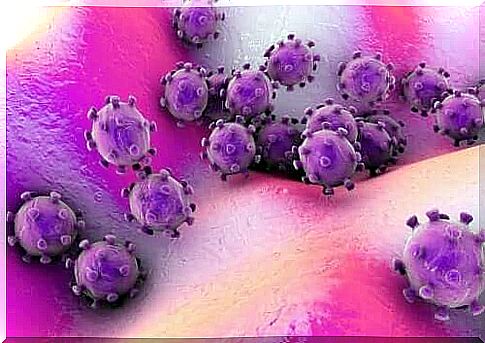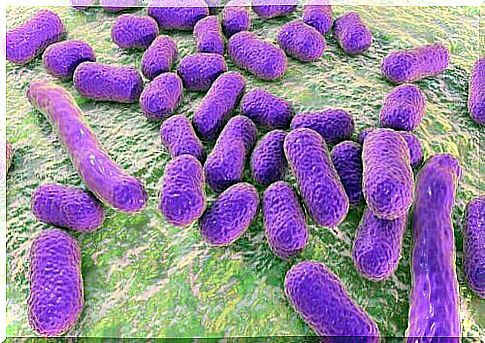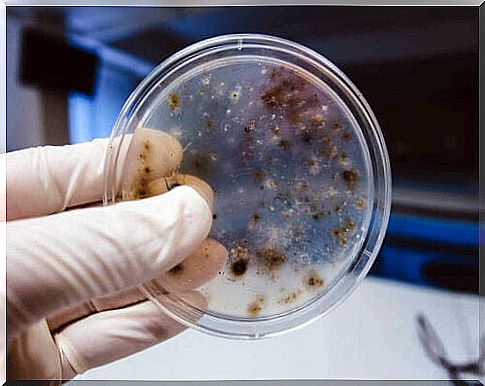What Are Germs And Where Are They Found?
The term germ is widely used in everything related to pathologies, especially when it is necessary to explain illnesses to the little ones. But, do you know which microorganisms are germs and where to find them?

Have you ever wondered what germs are? The word “germ” has several meanings depending on the context in which it is used. In biology, it is defined as the reproductive part of a plant that germinates to grow, for example. Metaphorically, we can also say that a germ is the initiator of something, of a movement.
Thus, we see fit to explain in this article the definition and location of germs as biological pathogens. If you want to learn more about this exciting microscopic world, read on.
What are germs?
A germ is defined as any microorganism capable of producing disease or of harming its host, whether it is a human being, an animal or a plant. There are four basic types of germs, and we’ll go into them in detail in this article.
Bacteria
Bacteria are prokaryotic (that is, one-celled) organisms, which are a few microns in size and come in various shapes.
According to the Earth Microbiome Project , there are over a trillion species of bacteria on the planet. It is therefore no exaggeration to say that it is the essential glue in any ecosystem. Depending on their morphology, bacteria can be divided into several types:
- Cocci, spherical in shape and depending on the number of individuals that form the structure (diplococci, tetracocci and streptococci)
- Bacillus, rod-shaped
- Helical shapes: vibrios, spirillae and spirochetes
Bacteria can be immobile or have motor skills, thanks to cilia or flagella. Depending on the detection method, based on the nature of the outer wall of their structure, they can be Gram negative or Gram positive. These microorganisms can be free living beings or pathogens.

Virus
Viruses are even smaller and simpler than bacteria. These germs are DNA or RNA chains (single or multiple) coated with a protein layer which gives them their three-dimensional shape.
There are nearly 5,000 known species of viruses, and their reproduction is impossible if they do not invade a host. Viruses sequester the patient’s cells and their function, self-replicating in them to continue to spread the disease.
Fungi, protozoa and others
In order to keep this article as concise and informative as possible, we will detail the rest of the germs or pathogens below:
- Protozoa are single-celled microorganisms, just like bacteria. However, they are different from these because they are of a large size and they present morphological complexity. They live in humid environments, and can be parasites. A very clear example of this category is the protozoan causing malaria
- Fungi, unlike protozoa, are a taxon of complex multicellular organisms, in which molds, yeasts and fungus growers are found. Some of them can infect animals such as plants, forming a mycelium (or “mushroom white”) in the cells of the affected tissue and feeding on it.
- There are also other germs more difficult to describe, such as viroids or prions, which are poorly configured RNA molecules or proteins with infectious capacity.

Where are the most germs?
The correct question would be: is there a germ-free place on Earth? Microorganisms dominate all environments, and surround us at all times (and are even found in our body).
But, as in the strict sense of the term a germ is a pathogen for other living beings, we will define its prevalence in certain public places:
- Swimming pools and water parks: this is where they all come together. Protozoa and fungi need humidity, and viruses have a high host density. Any moist, clumpy site is a good breeding ground for germ colonies.
- Money, supermarket carts, public restroom areas, etc: Many viruses and bacteria stay on areas for a period of time. Therefore, the more people there are in contact with an instrument, the more likely the instrument is to have a high germ load.
- Human body: even if it seems surprising, all the bacteria present in our body weigh approximately one to two kilograms. These are mostly present in our digestive system. Admittedly, these bacteria would not fall under the strict definition of germ, because they are not pathogenic for us. On the other hand, humans have high viral loads when they are affected by diseases, such as the flu or the common cold.
As we can see, the term germs is not enough if we want to include all the many microorganisms which are responsible for pathologies in living beings. They all have one thing in common: they are microscopic beings who take advantage of the existence of others to survive, causing all kinds of diseases in their hosts.









